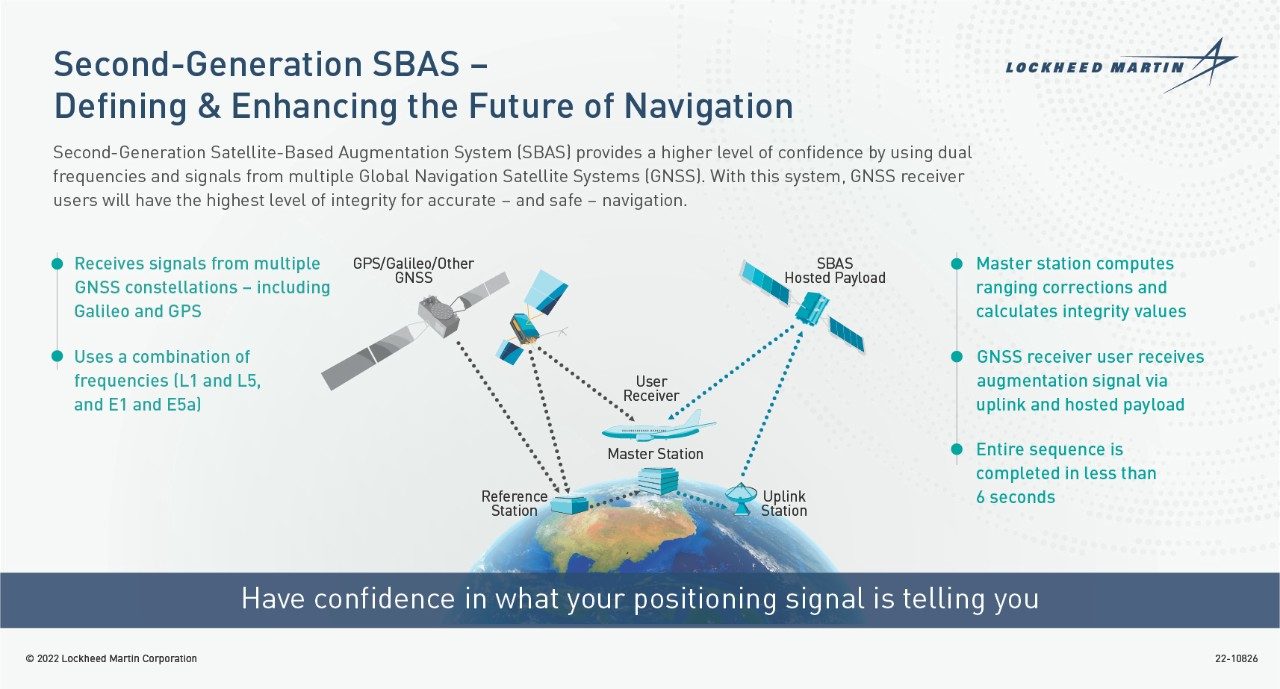Lockheed Martin has a well-established footprint in the Australian space community, with the establishment of a Tracking, Telemetry and Control ground station at Uralla, New South Wales, around 20 years ago.
Since the initial investment, Lockheed Martin Space has identified a significant number of potential growth opportunities and technology development upon which potential new business activities could emerge.
Lockheed Martin was pleased to operate the 2nd Generation Space Based Augmentation System Test Bed with Geoscience Australia and Land Information New Zealand. The test-bed demonstrated the utility and performance of legacy L1 and DFMC SBAS, along with Precise Point Position (PPP) via SBAS, broadcasting on two frequencies to augment signals from two Global Navigation Satellite Systems (GNSS): the U.S. Global Positioning System (GPS) and the European Union’s Galileo system.
In September 2022, Lockheed Martin Australia was awarded a A$1.18 billion, 19-year contract to deliver the Southern Positioning Augmentation Network (SouthPAN) SBAS signals as a service.
The SouthPAN initiative will deliver a signals augmenting GPS and Galileo over the Australasia region, improving accuracy from 5-10 metres, to within as little as 10 centimetres. The greater positioning accuracy and integrity of the SouthPAN signal has applications across a range of users, including civil aviation, vehicle guidance, precision agriculture for efficiencies in crop management, tracking maritime shipments, and enabling navigation for drones and other unmanned vehicles.
These high accuracy and high integrity GNSS signals are critical to enable systems for a wide variety of industries requiring high accuracy and high confidence positioning.




